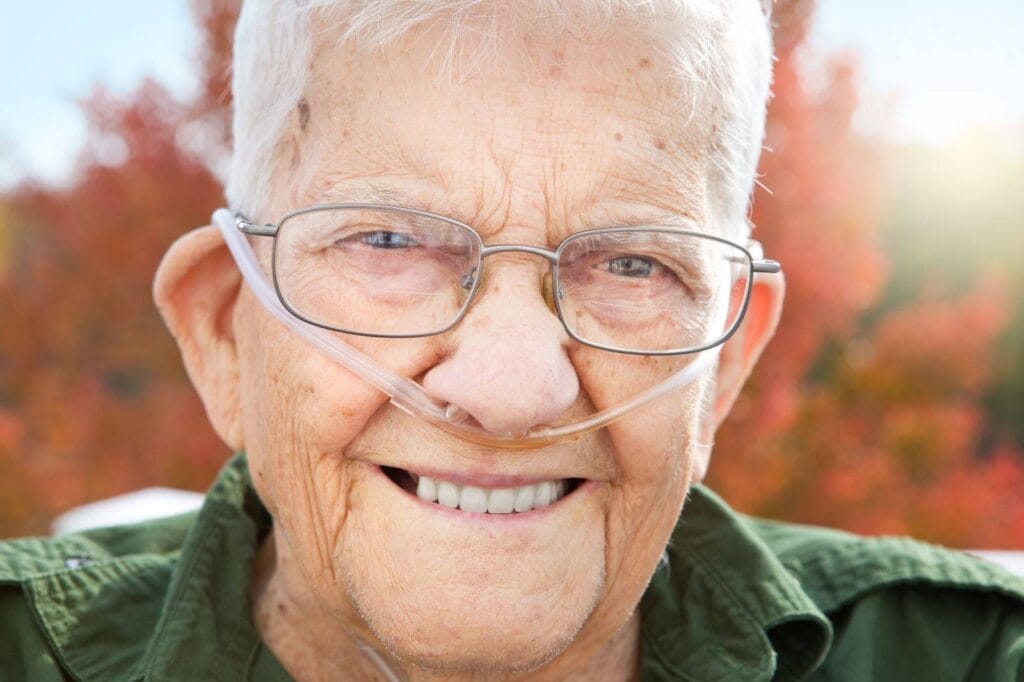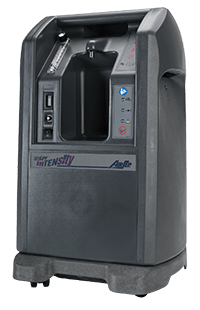
Oxygen concentrators are vital for seniors and individuals with respiratory issues, providing a reliable source of oxygen to help manage chronic conditions such as COPD, emphysema, and other lung diseases. While these devices offer essential health benefits, they can be expensive, especially for those living on a fixed income. Fortunately, Medicaid may help cover the cost of oxygen concentrators since they are classified as durable medical equipment (DME). However, Medicaid’s rules for covering these devices can vary based on individual circumstances and state-specific regulations. This article will explore how Medicaid pays for oxygen concentrators and what beneficiaries need to know to access coverage.
Medicaid coverage for oxygen concentrators
Medicaid typically classifies oxygen concentrators as durable medical equipment (DME), which are medical devices that are used repeatedly, serve a medical purpose, and are appropriate for use in the home. This designation is important because it allows beneficiaries to seek coverage for essential medical devices like oxygen concentrators under Medicaid’s DME guidelines.
For Medicaid to cover an oxygen concentrator, certain requirements must be met. These requirements can vary depending on your state because each state runs its own Medicaid program.
Typically, the beneficiary must first have a legitimate medical need for the device, which usually means they have a condition such as chronic obstructive pulmonary disease (COPD), severe asthma, or another condition that impairs their ability to breathe. In most states, a physician must evaluate the patient’s condition and provide documentation demonstrating that an oxygen concentrator is medically necessary. This is often required to get prior authorization from Medicaid before the device is covered.
Once the medical necessity is established, the physician’s prescription for the oxygen concentrator must be submitted to Medicaid along with other supporting documentation. The prescription typically includes details about the amount of oxygen required, how often the patient will need to use the concentrator, and any other specific needs. The documentation process is crucial, as Medicaid will not cover an oxygen concentrator without clear evidence that it is essential for the patient’s health and well-being.
Differences in coverage of oxygen concentrators by state
While Medicaid is a federally funded program, it is administered at the state level, meaning that each state has its own specific rules and regulations regarding the coverage of durable medical equipment like oxygen concentrators. As a result, Medicaid beneficiaries must check the guidelines in their state to determine what is covered and how to apply.
In some states, Medicaid may cover only certain types of oxygen concentrators or have stricter requirements for medical necessity. For example, California requires proof that less expensive alternatives, such as oxygen tanks, are not suitable for the patient before covering an oxygen concentrator. Others may have limitations on the extent to which portable or stationary oxygen concentrators are covered. Additionally, Medicaid coverage can differ based on whether the patient is enrolled in traditional Medicaid or a Medicaid managed care plan, as managed care plans can have different networks and rules for DME providers.
Because of these state-by-state variations, it’s essential for Medicaid beneficiaries to work closely with their health care providers and Medicaid representatives to ensure they understand the specific coverage rules in their state. This can help avoid delays in getting the oxygen concentrator and ensure that all necessary paperwork is submitted correctly.
Oxygen concentrator coverage for Medicaid beneficiaries in long-term care facilities
For Medicaid beneficiaries living in long-term care (LTC) facilities, the rules around coverage for oxygen concentrators can differ from those for individuals living at home. In many states, like New York, the long-term care facility is responsible for providing necessary medical equipment, including oxygen concentrators, as part of the patient’s care. However, the facility may work with Medicaid to receive reimbursement for these expenses.
When the long-term care facility provides the oxygen concentrator, Medicaid beneficiaries may not need to undergo the same approval process as individuals living at home. The facility typically manages the coordination of medical care and DME needs, ensuring residents have access to the necessary equipment. However, if a resident requires a more specialized oxygen concentrator, such as a portable unit, Medicaid rules may differ, and approval may still be necessary.
It’s also important to note that residents in long-term care facilities who are dually eligible for both Medicaid and Medicare may be able to access additional coverage for oxygen concentrators. Medicare often serves as the primary insurance for these individuals, while Medicaid acts as a secondary payer, covering any remaining costs that Medicare does not pay for. This dual eligibility can be especially helpful in covering out-of-pocket expenses related to DME.
Other financial assistance options for oxygen concentrators
While Medicaid can be a primary source of coverage for oxygen concentrators, it may not cover every situation, or the approval process could take longer than expected. In these cases, there are other avenues to explore, particularly for individuals who may be dually eligible for both Medicaid and Medicare or who can benefit from nonprofit organizations and community programs.
Dual eligibility: Medicaid and Medicare
For individuals who qualify for both Medicaid and Medicare, also known as dual eligibility, there may be additional coverage options for oxygen concentrators. Medicare Part B typically covers oxygen concentrators as DME as long as they are deemed medically necessary. If Medicare approves the oxygen concentrator, it will cover 80% of the cost, leaving the remaining 20% to the patient. However, if the patient is also covered by Medicaid, this secondary insurance may help cover the out-of-pocket costs that Medicare does not pay for.
This coordination between Medicare and Medicaid can be highly beneficial for seniors, especially those with limited income who need to avoid significant out-of-pocket expenses. Dually eligible beneficiaries need to ensure that their health care provider is aware of their dual coverage, as the provider can then bill Medicare first and Medicaid second, making the process smoother for the patient.
Nonprofit and charitable assistance
If Medicaid does not fully cover the cost of an oxygen concentrator, or if there are delays in getting the device approved, nonprofits and charitable organizations can be valuable resources for low-income individuals. Several organizations offer assistance to seniors and people with disabilities who need help acquiring medical equipment like oxygen concentrators. These programs can sometimes provide the equipment for free or at a reduced cost, depending on eligibility and available resources.
For example, organizations like local community health nonprofits may have programs that provide financial assistance for oxygen equipment. Additionally, some charitable organizations focus specifically on helping individuals access medical devices in rural or underserved areas. These programs often require an application and proof of medical necessity, but they can be an excellent option for those in urgent need of an oxygen concentrator but facing financial barriers.
Local and state-specific programs
In addition to national organizations, many states and local governments offer programs that help residents pay for necessary medical equipment. These programs can vary widely depending on location, but they may be run through departments of aging, public health, or disability services. Some state Medicaid programs have additional assistance for durable medical equipment, especially for individuals who may not qualify under the traditional Medicaid process but still have significant medical needs.
Patients should contact their state Medicaid office or local health department to inquire about these programs. They can often guide you through the application process or connect you with local resources that provide assistance.
Wrapping it up
Securing an oxygen concentrator through Medicaid can be complex, but it is possible with the right information and support. As durable medical equipment (DME), oxygen concentrators may be covered by Medicaid, but beneficiaries must meet specific requirements, including proving medical necessity and following state-specific guidelines. Coverage rules may differ slightly for those living in long-term care facilities, but the facility typically helps manage the provision of necessary equipment.
Additionally, individuals who are dually eligible for both Medicaid and Medicare may find that Medicare can help cover a significant portion of the costs, with Medicaid stepping in to cover what remains. For those who may not be fully covered by Medicaid or who are facing financial challenges, nonprofits, community organizations, and state programs can offer further support.
Ultimately, navigating Medicaid coverage for an oxygen concentrator requires patience and attention to detail. Working closely with health care providers, Medicaid representatives, and possibly financial assistance organizations can help ensure that patients get the equipment they need to manage their health conditions effectively.








